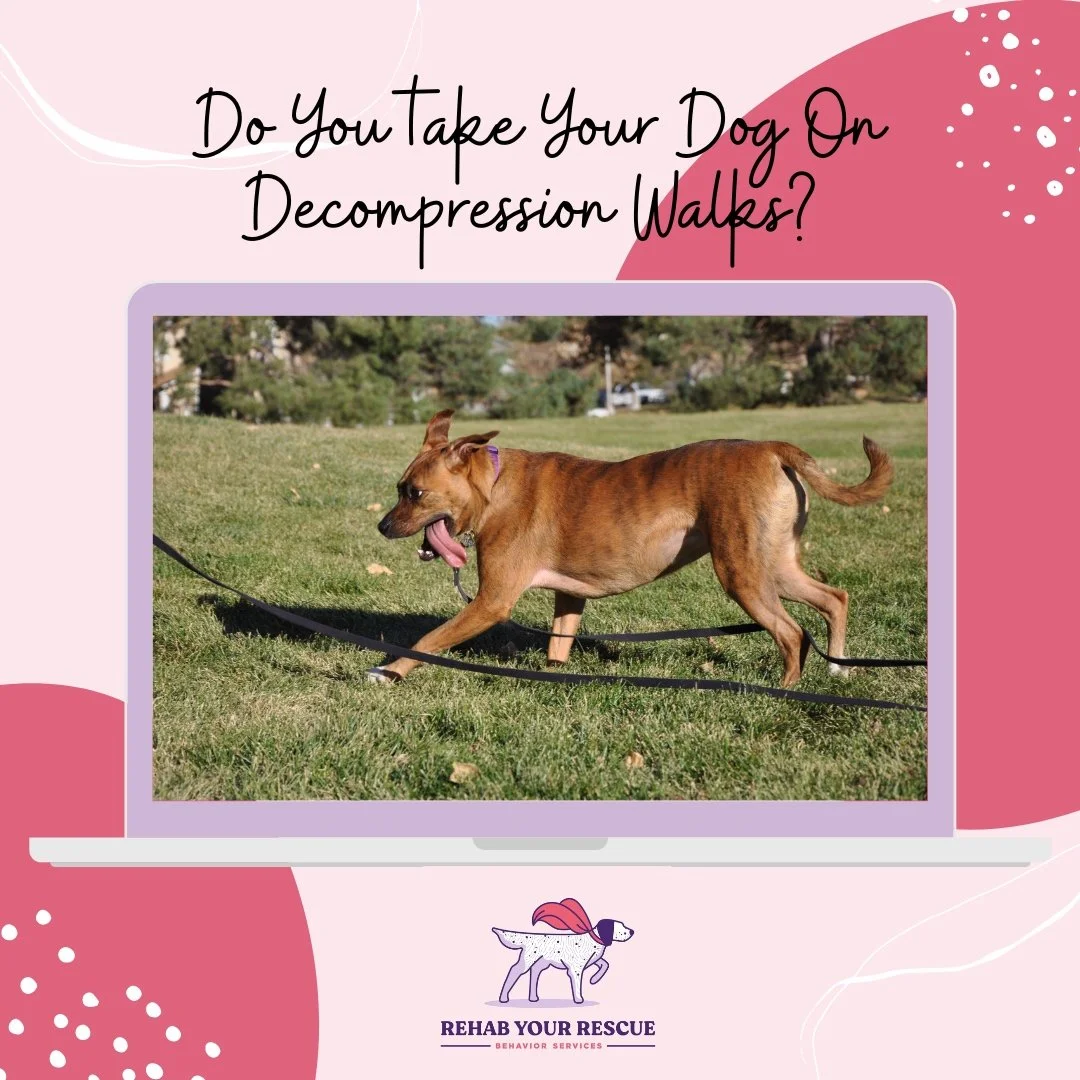What is a decompression walk?
Many of us spend a lot of time walking our dogs. We take them out during our lunch breaks for a quick lap around the block, we take them with us on our morning workout, and some of us use walks to keep up with our dog’s training in distracting environments. But, how often do you take your dog out on decompression walks, too?
Decompression walks are different from a regular loop around your neighborhood because they’re meant to give your dog as much autonomy and freedom of movement as possible. Also known as “choice” walks, the entire trip is dictated by what your dog wants to do (within reason if it’s safe). They’re allowed to sniff for as long as they want- if you have a super sniffer, this may mean you spend a large portion of the trip with your dog’s nose to the ground letting them follow scents. They’re allowed to choose the route, which means you may not be walking in a straight line the whole time down a sidewalk. If they want to pick up the pace and walk quickly, you follow! If they want to slow down and linger in certain places, you don’t ask them to hurry along. These walks aren’t about obedience or physical exertion- they’re about letting your dog have choice, de-stress, and have a chance to just be a dog!
What do you need for a decompression walk?
A long line and back-clip harness- for true decompression to happen, you need to let your dog have a little bit of freedom! A regular 4-6 foot leash won’t cut it, look into getting a long line instead. Long lines start out at 10-15 feet long and can go all the way up to 50+ feet depending on where you’re bringing your dog and how much space you can allow them to take.
An open space or quiet trail- decompression walks are about relaxation for your dog, so walking them in busy areas, or bringing your reactive dog around a bunch of triggers won’t allow for much true decompression. Try to find a quiet park and go during “off” times in the day, or find a hiking trail to try out just outside the city.
High value rewards in a treat pouch for reinforcing behaviors- any good behavior on a long line, recalling back to you when needed, leaving alone an unsafe item when asked, etc are all behaviors that you should reinforce on a decompression walk. When you need to ask something of your dog while bringing them in a very interesting, stimulating environment, be sure you have rewards they love with you to reinforce those good choices!
Safety equipment- when going out into more rural or natural spaces, be sure that you bring safety equipment with you like a first aid kit for yourself and your dog, wildlife deterrent, a spare short leash in case of emergency, etc. Always go on adventures with your dog prepared!
Try to take your dog on regular decompression walks, especially if they experience issues related to fear, anxiety, or stress on a day to day basis. Reactive and fearful dogs can benefit greatly from opportunities to decompress, and you may see a difference in their behavior if given regular outlets to express natural behavior away from common triggers you would encounter on a neighborhood walk! Are you ready to give your dog more choice on their walks?

